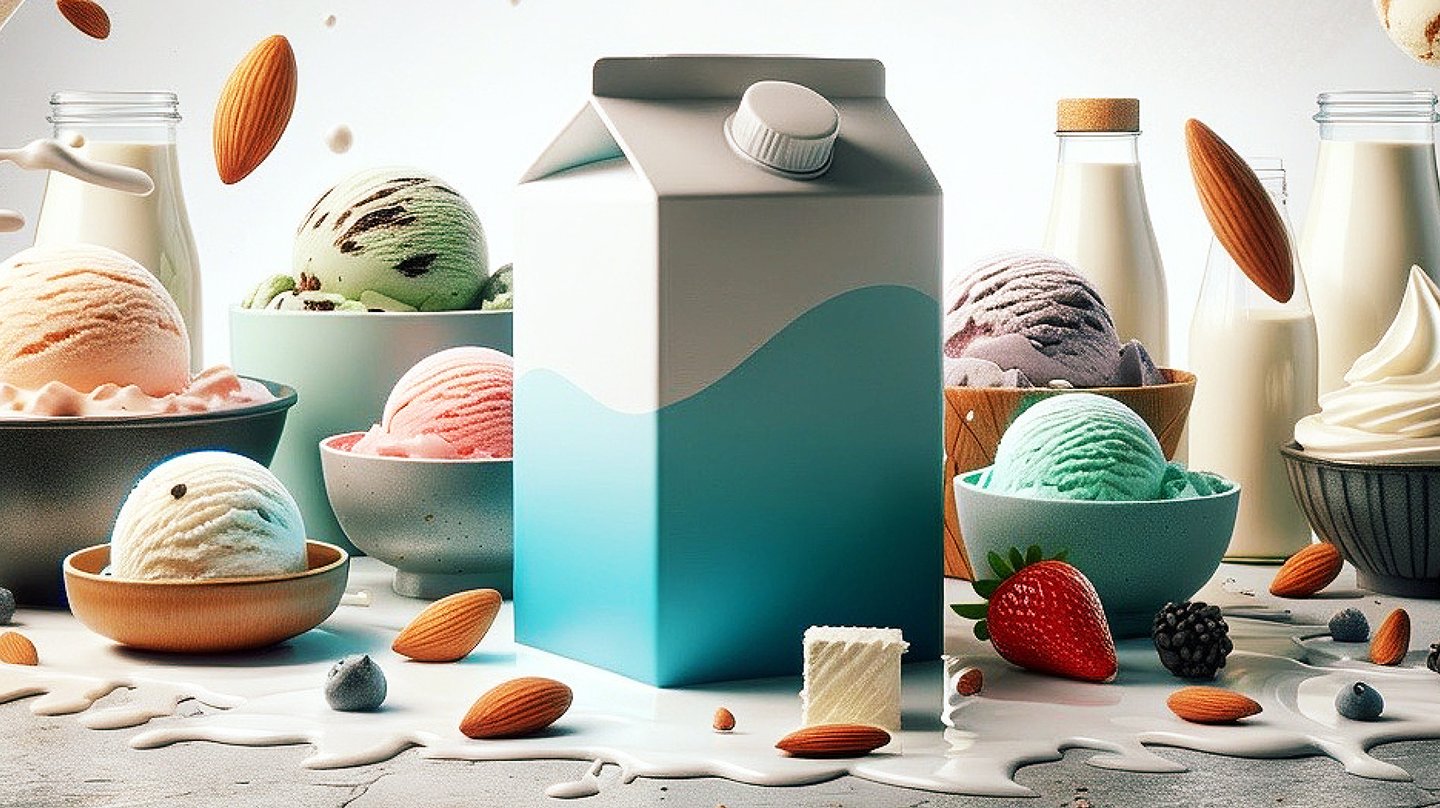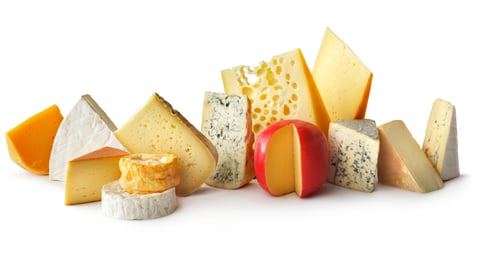A look at what’s driving demand in the dairy category
While tried-and-true formats for fluid milk, yogurt and ice cream will always have a place in refrigerators and freezers, Canadian consumers are increasingly demanding more—and more variety—from dairy products. This wish list, which ranges from health benefits to bold new flavours to plant-based alternatives, is driving innovation and changing the dairy shopping experience.
Research from the IMARC Group indicates Canada’s dairy market was worth US$15.4 billion in 2024 and projects a rise to $22.9 billion in 2033, suggesting strong continued growth in the category overall. Dig inside the world of dairy, however, and the situation is more complicated than it might appear.
“Many of the dairy categories are in the top 10 to 20 categories across the entire store,” says Ray Hepworth, vice-president, grocery merchandising at Metro. “There has been some modest dollar growth, but we’ve seen some softness from a tonnage standpoint—and tonnage is the engine of a lot of our models from the point of view of labour efficiency and supply chain networks.”
Still, as consumer behaviour evolves, new flavours, formats and health attributes continue to flood into dairy sections at grocery stores across the country—not to mention other areas of the store where grocers may shelve non-dairy alternatives. Even in an environment where, in the words of Scott Prygiel, category manager, grocery, frozen and dairy for Farm Boy, “consumers are becoming more selective,” there is good reason to believe the category will remain a retail flagship.
To ensure this is the case, grocers and manufacturers must be attuned to the ever-changing needs and tastes of their customers, and they must also do so in an uncertain economic environment. With all of this in mind, here are the dairy trends shaping the marketplace in 2025.
Focus on health
Whether it be fluid milk or yogurt, today’s consumer is after a broader range of health benefits from their dairy consumption than ever before. According to global research from Innova Market Insights, “Consumers are seeking products with a high nutritional value, including those high in protein. This trend could lead to a shift in dairy product demand towards more functional and nutrient-rich options.”
Jo-Ann McArthur, president of Nourish Food Marketing in Toronto, says that trend has already arrived and, as is the case in many other categories, protein is the name of the game for dairy. “That’s driven by consumers’ fixation on getting enough protein, especially with an aging population,” she says.
READ: How companies are meeting the demand for protein-rich products
McArthur notes Canadian brands such as Natrel, Neilson and Dairyland are following the path set out by Coca-Cola’s Fairlife brand in producing fluid milk options that offer a protein boost.
“Protein was of interest to many consumers in the past, but has really been put at the forefront more recently,” says Brad Knight, director insights & strategy, Saputo Dairy Products Canada, producer of the Neilson and Dairyland brands, among others. He says customers are looking for extra protein in both large (Neilson’s 1.89-litre cartons with 18 grams of protein per serving) and small (310-millilitre Milk2Go) formats.
The protein craze is also finding its way to yogurt—but it’s only one of many health benefits Canadians are looking for in the category. While acknowledging the value of protein for muscle building and recovery, Geneviève Bolduc, head of yogurt at Danone Canada, points out that gut health and reduced sugar remain paramount.
“Consumers are looking for probiotics—products containing live and active cultures to support digestive health and enhance gut microbiota,” explains Bolduc. “Additionally, there is a growing preference for products with lower sugar content to manage calorie intake and support overall health.”
Bolduc cites Danone’s Activia brand and Oikos Pro, a new offering that promises high protein and no added sugar, as examples of her company’s efforts to meet consumers’ health demands.
Some dairy products remain comfortably in the realm of not-so-guilty pleasure. While various ice cream innovations have resulted in products with less sugar or even added protein, McArthur is skeptical of their impact. “When people buy ice cream, the job they’re hiring it for is indulgence,” she says.
Plant-based dairy alternatives
Innova’s research reveals at least 48% of global consumers are willing or very willing to buy dairy alternatives based on ingredients such as oats, coconut, almonds or rice. The firm attributes this finding to the increasing popularity of plant-based diets, as well as health and environmental concerns.
“Consumers are, increasingly, adding plant-based items to their shopping lists alongside traditional dairy,” says Farm Boy’s Prygiel.
Indeed, plant-based dairy consumers are not necessarily foregoing traditional milk and yogurt—it’s more a matter of diversifying their diet. As vice-president, marketing at Burnaby, B.C.-based Earth’s Own, Brittany Hull is focused on opening the gate to all customers who want to dabble or dive into the world of plant-based milk. “Ninety per cent of our consumers also consume dairy,” Hull says. “They’re trying more plant-based options, but don’t want to give up the things they love.”
READ: Innovation continues to power the plant-based food movement
Earth’s Own recently launched The Alt, which better mimics the taste and texture of dairy milk for consumers who prefer it to the distinctive flavours of oat, soy and almond. “It’s a more natural taste that reflects dairy and works as a one-to-one swap,” she says. “A lot of consumers do like the flavour of plant-based milk, but there’s a segment of the population that isn’t looking for that, and now we’ve got more options specifically designed for them.”
Hull says plant-based barista-inspired products, such as her company’s line of flavoured creamers and milk alternatives designed specifically for coffee, are having a major moment.
“Coffee tends to be either the first or the last bastion as far as where people enter the plant-based milk category,” says Hull. “There’s a ton of people that are experimenting with adding flavour into their coffee.”
Flavours in fashion
Canada’s changing population and evolving consumer tastes have resulted in a wave of new flavours within the dairy category. This trend is particularly strong in yogurt and ice cream, where the influence of diverse ethnic cuisines is increasingly on display.
“We’re seeing all sorts of interesting things in terms of flavours,” says McArthur, citing Maison Riviera’s Mango Cardamom Yogurt with 9% milk fat, from the brand’s Versailles Bouquet collection, as an example. She adds that flavours such as matcha are also showing up in ice cream SKUs, including plant-based ice cream.
Kayvan Mahbod, president at Demetres—which operates scoop shops and bakeries and sells pints of ice cream at retail partners such as Longo’s, Bruno’s Fine Foods and Pusateri’s—says these kinds of products often outsell more traditional ice cream flavours. “The matcha, the saffron, the cajeta (a goat’s milk dulce de leche),” he says, rhyming off his company’s hot-trending varieties. “We introduced ube ice cream and it’s on fire.”
Mahbod says the rising popularity of these flavours may reflect a consumer base that is only now catching up to innovation. “We’ve introduced matcha to our menu multiple times over the past 10 to 15 years and it’s doing so much better today than it ever has. Our take is that the rise of diversity and multiculturalism means that these flavours are … becoming a little bit more mainstream.”
This article was first published in Canadian Grocer’s March/April 2025 issue.



